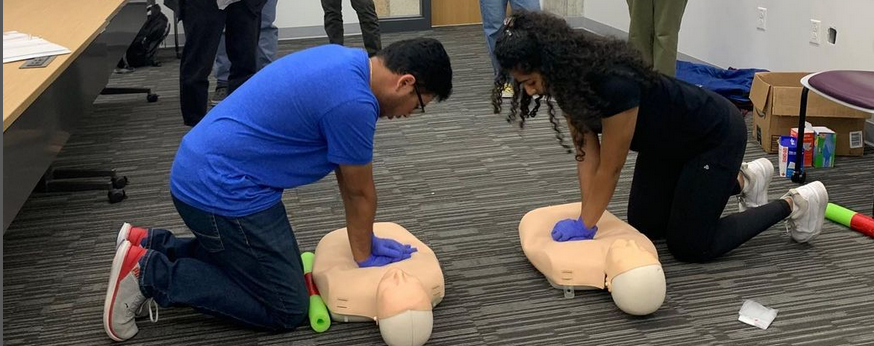Regional organization Strive to Save Lives offers students a cheaper way to get CPR certified
CPR certifications on average range from $60 to $90, which is a deterrent to students learning a potentially life-saving skills. To make this process more affordable to students, Strive To Save Lives — a regional program with the American Red Cross — is working with UTD Red Cross Club, AHA and another CPR organization to offer free CPR training and cheaper certifications. Senior neuroscience major Rohan Jupelly, who runs Red Cross Youth, started the organization with the goal of facilitating free CPR training.
“We’re trying to offer free training to whoever we can…we’re just trying to make the prices more affordable… so it’s a little bit more accessible,” Jupelly said. “Through our partner Revitalize CPR, we leverage the profit we generate from offering CPR and FAST classes to college students to cover the expenses of teaching free FAST and low-cost CPR classes to middle and high school students.”
Through the UTD Red Cross Club, students can attend free CPR training sessions. However, to get certified, students will have to pay a discounted rate of $24.
Unlike some organizations, Strive to Save Lives does not aim to profit off of offering CPR certifications, meaning they can offer them for cheaper. To start the process, students can contact the organization’s partner through their website, revitalizecpr.com, or reach out to the UTD Red Cross Club. The organization also offers training to become an instructor and teach CPR on campus and in high schools.
“There are actually quite a few students on campus who are already volunteer instructors,” Jupelly said. “They just need to attend the instructor course and then from there they’re good to go in terms of teaching these classes. These instructors have been teaching on campus, but they’ve also been going on to local high schools and middle schools as well as conducting teaching there.”
Strive to Save Lives also teaches First Aid for Severe Trauma (FAST) to high school students, in part thanks to government funding associated with the program. Currently, Strive to Save Lives is working on offering FAST on campus.
“FAST classes are rarely offered and also possess a restrictive price,” Jupelly said. “Strive to Save Lives and our partner Revitalize CPR are looking to increase the accessibility of CPR and FAST by lowering cost barriers and making classes more widely available, especially to younger audiences. By offering more affordable classes, we hope that more people will recognize the importance of learning life-saving skills and choose to participate in a training session without cost being a significant hindrance.”
The Red Cross Youth’s website will include more information on Strive to Save Lives in the future. For now, the organization offers their services through the Red Cross and UTD Red Cross Club. Jupelly said that it is critical for students to be able to perform CPR in the case of an emergency.
“Situations that require them like cardiac arrest or life-threatening bleeding need to be addressed within the first few minutes. Otherwise, the likelihood of survival goes down dramatically,” Jupelly said. “EMS response time is about 7 minutes, depending on the population density of the area, so it is critical for bystanders to stabilize the situation in the meantime by performing CPR, using an AED, or controlling severe bleeding to increase the chances of a better outcome.”





